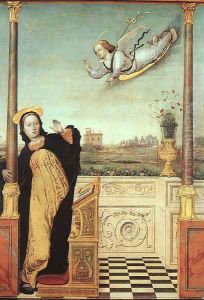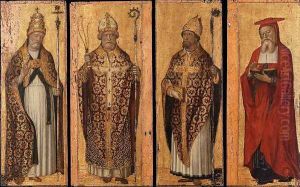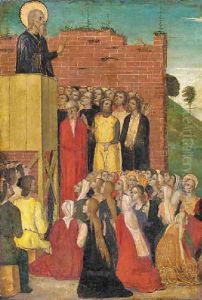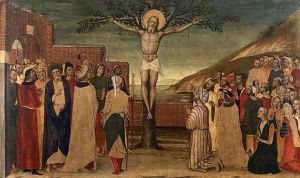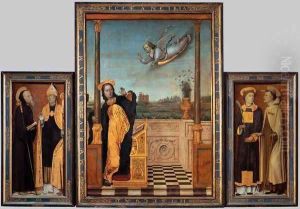Carlo di Braccesco Paintings
Carlo di Braccesco was an Italian painter who is known to have been active between 1478 and 1501, primarily in the region of Liguria, specifically in the city of Genoa. Not much is known about his early life, including his exact birth year, which remains a mystery to art historians. His artistic contributions fall within the late Gothic and early Renaissance periods, a time of significant transition in European art, characterized by a growing interest in naturalism, perspective, and the human figure.
Carlo di Braccesco's work is notable for its vibrant use of color and detailed depictions of religious themes, which were common among artists of his time. He was heavily influenced by the prevailing Gothic traditions, yet his work also hints at the emerging Renaissance style, particularly in his attempts to incorporate perspective and a more naturalistic approach to human figures. This blend of styles makes his work an interesting subject of study for understanding the evolution of Italian painting at the turn of the 15th century.
One of his most famous works is the 'Madonna of Mercy' altarpiece for the Church of San Bartolomeo degli Armeni in Genoa. This piece exemplifies his style, showcasing his ability to create elaborate compositions with a rich palette and intricate details. Despite the significance of his contributions to the Genoese art scene, Carlo di Braccesco did not achieve the same level of fame as some of his contemporaries, such as Sandro Botticelli or Leonardo da Vinci, and as a result, many aspects of his life and career remain shrouded in obscurity.
The exact date of Carlo di Braccesco's death is unknown, further compounding the mystery surrounding his life. Nevertheless, his surviving works continue to be studied and appreciated for their artistic merit and for the light they shed on a pivotal moment in the history of art. Di Braccesco's legacy is that of a skilled artist who bridged the gap between the medieval and the modern, contributing to the rich tapestry of Italian Renaissance painting, even if only on the periphery of its most celebrated figures.
